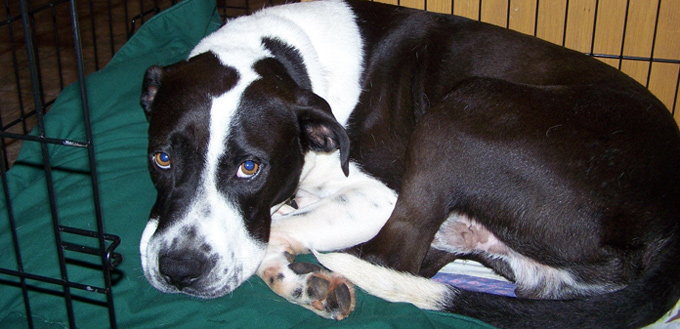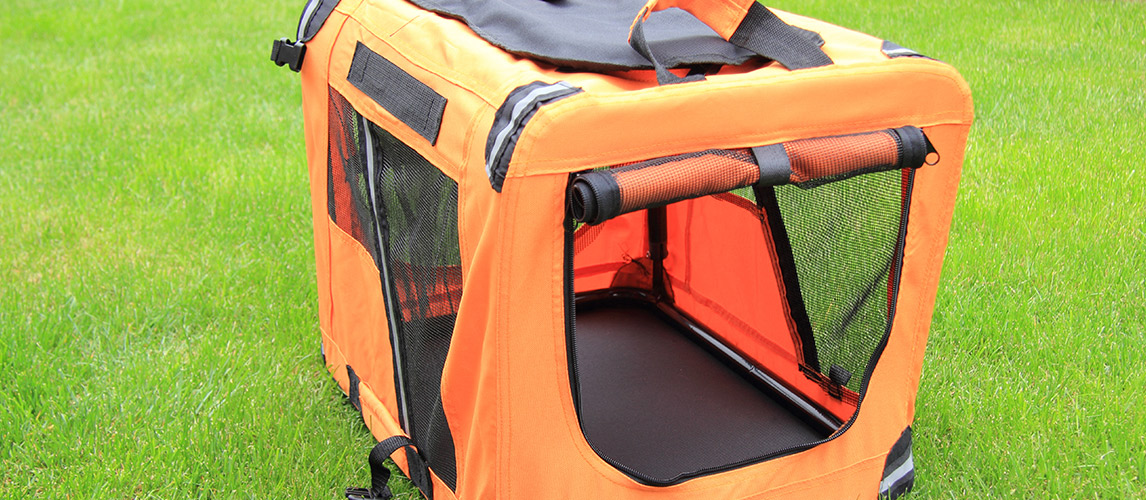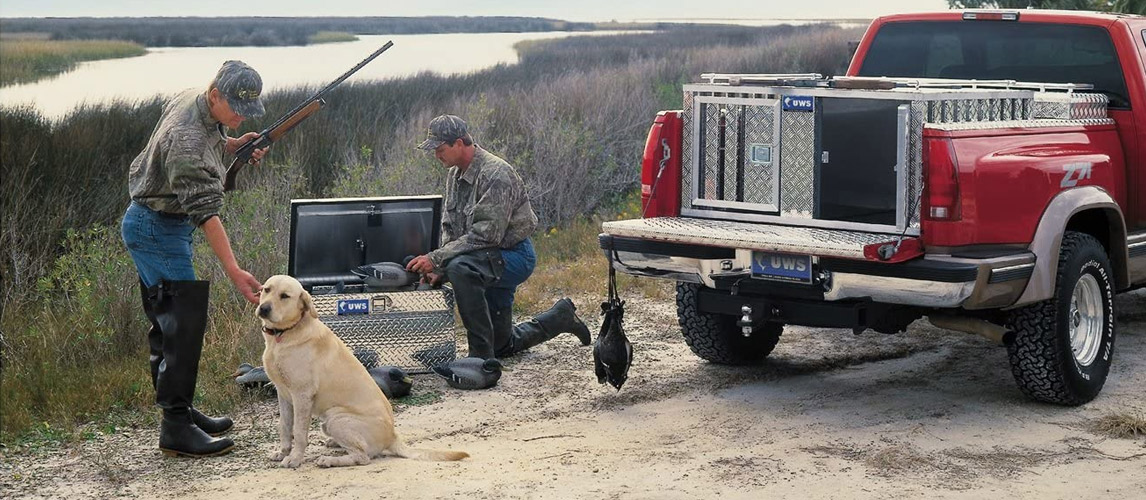Crate-training your dog is a big step, and if you’ve not experienced crate-training before, then it can be quite difficult to know what will be best for your dog. A dog crate is a wonderful form of indoor kennel, where your dog gets a space that is secure and familiar. Many dogs enjoy spending time in their crate, viewing it is their own space – a peaceful retreat from the rest of the world.
There are many benefits to crate-training your puppy, or adult dog, but you need to make sure that you get the transition right, by purchasing the right crate for your dog. Choosing the right size of dog crate is of the upmost importance – you want the space to be practical, but also ensure that your dog is free to move and relax.
Related Post: Dog Crates
Why Is It Important to Choose the Right Sized Dog Crate?
Choosing a dog crate that is either too large for your dog or too small, can cause problems and mean that your dog doesn’t respond well to crate-training. A crate that is too small won’t give your dog enough room to move – the crate needs to allow them to fully stand up and sit up straight. The dog should be able to turn in the cage, stretch out, and lay down fully. The general rule to follow is that the crate should not restrict their movement in any way.
While picking a crate that is too small can make your dog uncomfortable, and be unsuitable for them overall, most people don’t realize that the same can be said for the reverse. A crate that is too big is not going to be well-suited to your four-legged friend. When toilet training your dog in a crate, they can’t have so much room that the crate feels like a place to go toilet. Equally, the crate needs to feel homely, so your dog can be comfortable; a crate with excess room will only leave your dog feeling lonely.
Understanding the purpose of dog crates can help you to get a feel for what kind of space your dog is going to need. Dog crates are used to both help the dog feel safe and secure and help the owner to train their dog. There are six big reasons why many dog owners choose to crate-train their dogs;
- Transportation – From long car journeys, to quick trips to the park, crate-trained dogs can easily be transported in a safe and secure way, without any worries about the dog jumping around the car and injuring your or themselves.
- Confinement – If you can’t directly supervise your dog, or your need to go out and leave your dog at home, then a crate provides a safe form of confinement.
- Inclusion – Confinement doesn’t mean exclusion, a crate gives you the ability to include your dog in activities without worry about them getting under your feet, such as when cooking or when you have visitors.
- Training – There are two main training aspects to the dog crate; toilet-training and training your dog to be alone. A dog that learns how to be alone from an early age will find the experience less stressful in the future and will help to curve destructive behaviors.
- Safety – If your dog is injured and needs to recover in a safe environment, then a dog crate provides the perfect safe space.
- Sanctuary – Above all, the dog crate will be your dog’s retreat. The security your dog will feel in the crate makes it an ideal place for them to sleep, relax, and play.
What Are the Different Sizes of Dog Crate?
Thankfully, there are many different sizes of crate available for every breed and weight of dog. Taking a look at the suggested breed of dog for each size of crate is a great starting point. If your dog is an average size and weight for its breed, then you’ll most likely hit the nail on the head with the matching dog crate.

There are six main dog crate sizes to choose from, ranging from XS to XXL. Take a look at our break-down of the dog crate sizes, to see which one is best suited to your dog:
Extra Small (XS)
Designed for the smallest breeds of dog, the XS dog crate is generally suitable for dogs that weigh up to 10lbs. Most XS dog crates have a similar width, of around 12”/13”, but the height and length can change considerably more, between 18” and 22” for length, and 14” to 16” for height.
Examples of dog breeds that suit an XS dog crate, include:
- Pug
- Papillon
- Chihuahua
- Yorkshire Terrier
- Boston Terrier
Small (S)
The small dog crate is designed for dogs that weigh between 11lbs and 25lbs, with a standard width of around 18” and length of 24”. There is a lot of variance when it comes to height, with the ability to select a crate between 19” and 21”. Depending on your needs, small dog crates are available with single, double, OR triple doors.
Examples of dog breeds that suit a small dog crate, include:
- Yorkshire Terrier
- Maltese
- Border Terrier
- Miniature Poodle
- Fox Terrier
Medium (M)
For dogs that weigh between 26lbs and 40lbs, the medium dog crate is often the best choice. Like the small crate; single, double, and triple door designs are available. The crate normally features a 30” length, with between a 19” and 21” width, and 21” to 24” height.
Examples of dog breeds that suit a medium dog crate, include:
Large (L)
The large dog crate is much taller than the medium crate, with an average height of between 25” and 27”. You also can expect the width to be either 23” or 24”, with a standard length of 26”. Dogs up to 70lbs are well-suited to the crate, with single to triple doors available.
Examples of dog breeds that suit a large dog crate, include:
- Welsh Corgi
- English Setter
- Basset Hound
- Harrier
- Bulldog
Extra Large (XL)
With a standard length of 42, width of 28”, and height variance of between 30” and 31”, the XL dog crate is the second largest style of crate available. The crate can handle a dog weight of between 71lbs and 90lbs, with between one and three doors available.
Examples of dog breeds that suit an XL dog crate, include:
- German Shepherd
- Labrador Retriever
- Border Collie
- Siberian Husky
- Boxer
Extra Extra Large (XXL)
The largest of the dog crates, the XXL crate is reserved for the giant breeds of dog, capable of holding 90lbs plus of weight with up to three doors. There is a lot of variance in sizes among the XXL dog crates available, with the length ranging from 46” to 54”. The width can differ between 30” and 35”, almost 3x the size of the XS crate, and the height can vary between 33” and 45”.
Examples of dog breeds that suit an XXL dog crate, include:
- Great Dane
- Greyhound
- Bernard
- Newfoundland
- Bloodhound

How Do I Measure My Dog for a Crate?
To make sure that the crate you choose is going to be right for your dog, it’s important to measure and weigh your dog first. Along with the weight of the dog, there are two key measurements that you will need; the height and length of the dog.
- Length: The length is a measurement from the tip of the nose to the tail. Depending on your dog breed, you can account for some of the tail or all of the tail. For the comfort of dogs with harder tails, more of the tail should be measured.
- Height: The height is a measurement of the head to the bottom of the front foot, in cases where the dog has permanently erect ears, the ear height should be added to the measurement also.
After you’ve got the measurements, the next step is to make sure that your dog has the extra room it needs to move. This can be achieved by adding about 10% extra to the measurements of both height and length, or about 2” for smaller dogs and 4” for larger dogs.
Related Post: Dog Crate End Tables
What About Puppies?
As mentioned before, puppies can’t be given so much room that they start to view the crate as a toilet. However, it’s not viable for most people to buy a new crate every month as their puppy starts to grow. For the final crate size your puppy will need, it can help to research the average size of the breed, and plan for that size. To make the larger crate more suitable, you can use a divider to section off the part your puppy needs and then adjust the size as the puppy grows.
Many dogs relish having a private space to retreat to when they need time to themselves. However, if you’re training your dog to use a crate for the first time, then it’s always important to take your time and work at your dog’s pace. Not all dogs take to crate-training immediately, but if you start with the right sized crate, and work with your dog, then you can make the whole process as easy as possible.
Sources:
- Mikkel Becker, The Right Crate for Your New Puppy, Vetstreet
- How to Choose a Dog Crate, WebMD







